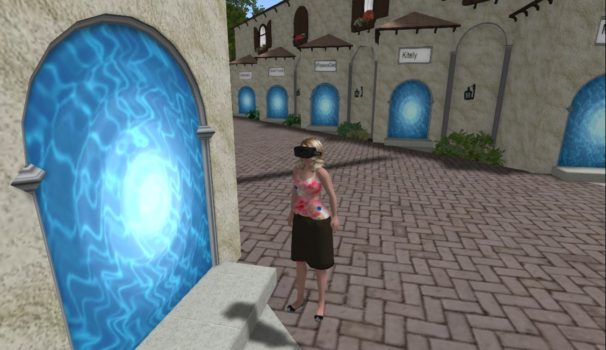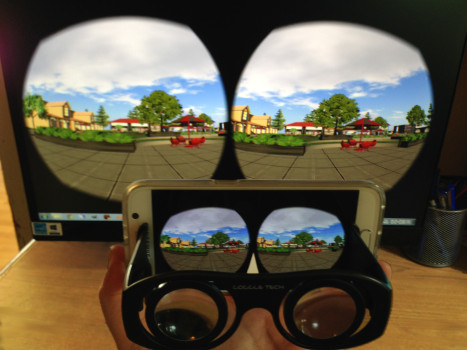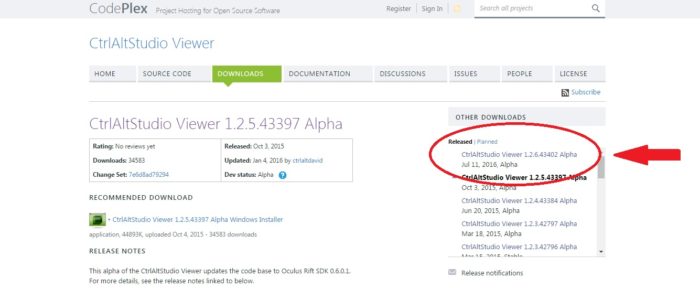
Last week, Linden Lab said that it was no longer working on its Oculus Rift viewer for Second Life, dashing OpenSim user hopes that eventually their viewer would be open sourced and be a usable virtual reality access option for their grids.
However, CtrlAltStudio’s David Rowe says that he is updating his viewer to work with the consumer version of the Oculus Rift, with an alpha version already available for download.
Last fall, Rowe said that he was suspending work on his viewer because there was no need for it since Linden Lab was working on its own version.
That has now changed.
“We can’t say at this point when or even if we may release another Project Viewer for experimenting with the Oculus Rift in SL,” said a Linden Lab representative in a forum post last week.
 “It’s been an unfortunate turn of events, indeed,” Rowe told Hypergrid Business.
“It’s been an unfortunate turn of events, indeed,” Rowe told Hypergrid Business.
The update he is working on now is based on the old Firestorm 4.6.9 code base, he said, but will support the latest Oculus runtime and the consumer version of the headset. Previously, the viewer supported the the developer kit version.
He is not currently integrating it with more recent viewers, or trying to make optimizations for frame rates.
“I won’t be returning to CtrlAltStudio Viewer work per se,” he added.
One of the most difficult problems with creating a virtual reality viewer for OpenSim, and for Second Life, is that the frame rate is neither high enough nor consistent enough for virtual reality. If the image of the virtual environment suddenly starts updating more slowly, it’s only a minor inconvenience for desktop users, but could cause motion sickness for those visiting with virtual reality headsets.
Solving this problem requires major structural work on the server software used to run the worlds. It’s not something that can be fixed just in a viewer.
“Due to some inherent limitations with SL, it may well not be possible to achieve the performance needed for a good VR experience,” the Linden representative said. “In fact, this is one reason why we’re creating Project Sansar a new, separate platform optimized for VR.”
Other issues involved in creating a virtual reality viewer include replacing the menus and mouse-and-keyboard interactivity with more appropriate input methods, such as look-to-activate, gestures, and voice commands.
In addition, the Oculus Rift retails for $600 — with most people also having to spend at least $1,000 to get a computer powerful enough to run it. Many users aren’t willing to spend that much, especially on first-generation technology.

The CtrlAltStudio viewer doesn’t run on mobile-based headsets such as Samsung’s Gear VR or Google Cardboard. However, there is a work-around to use it on Cardboard-compatible devices in combination with a computer using tools such as RiftCat or TrinusVR.
Some users also report that they have been able to get VorpX to work, as well.
- OSgrid back online after extended maintenance - April 16, 2025
- Analysts predict drop in headset sales this year - March 25, 2025
- OSgrid enters immediate long-term maintenance - March 5, 2025

